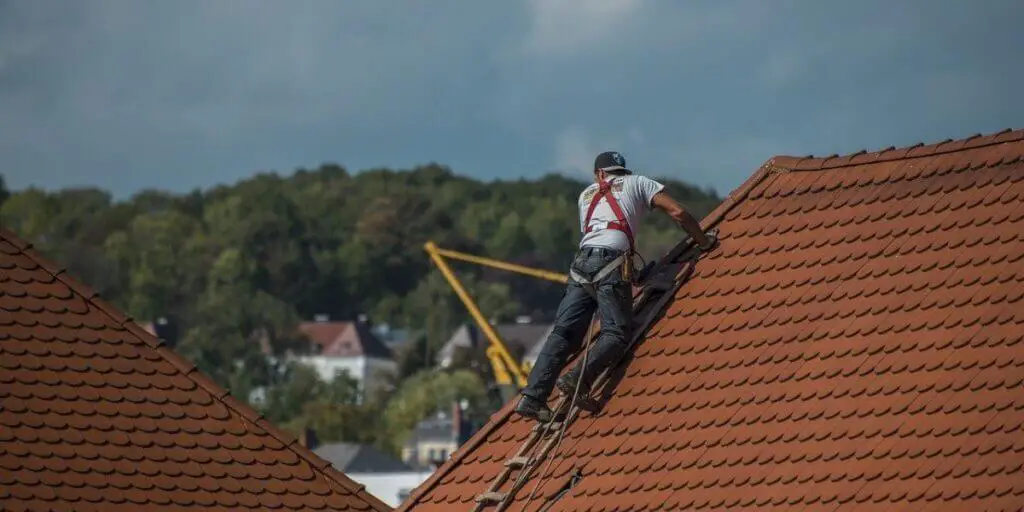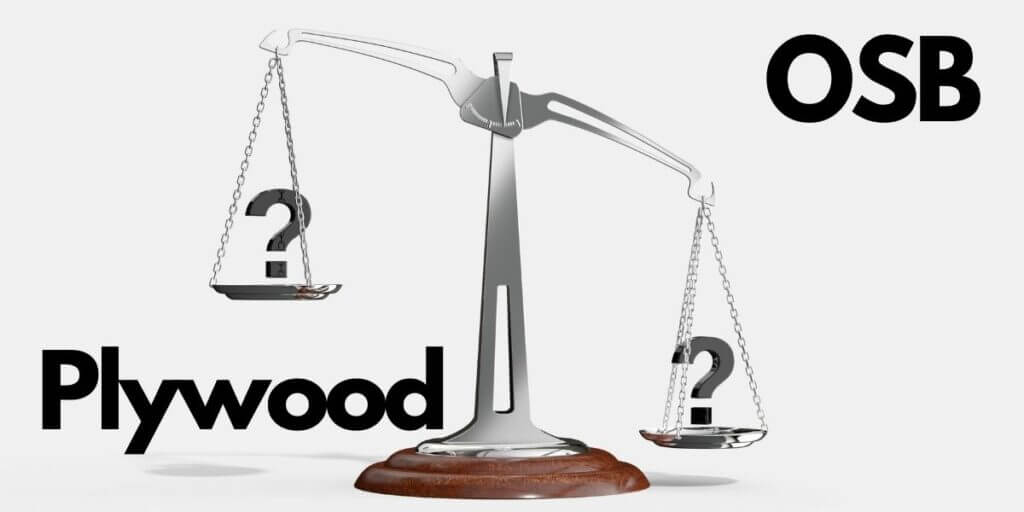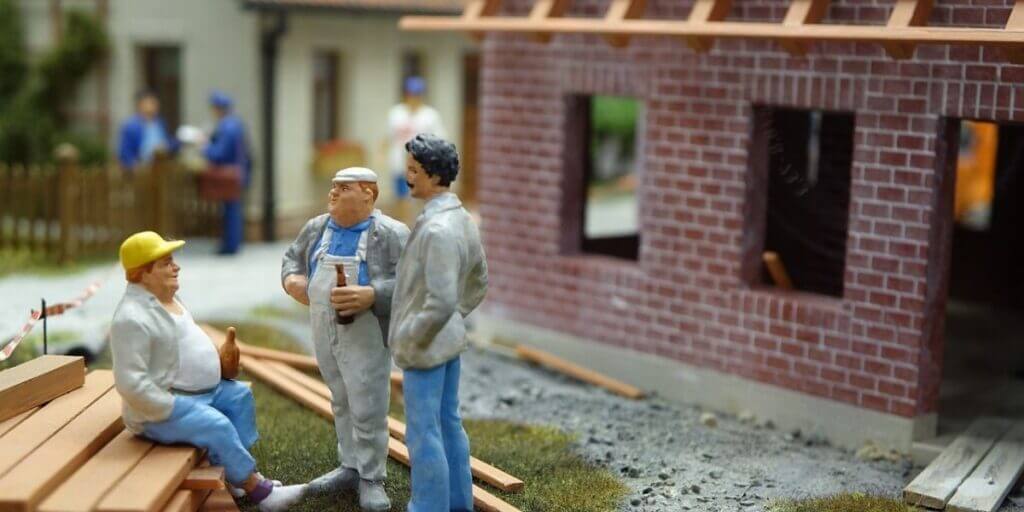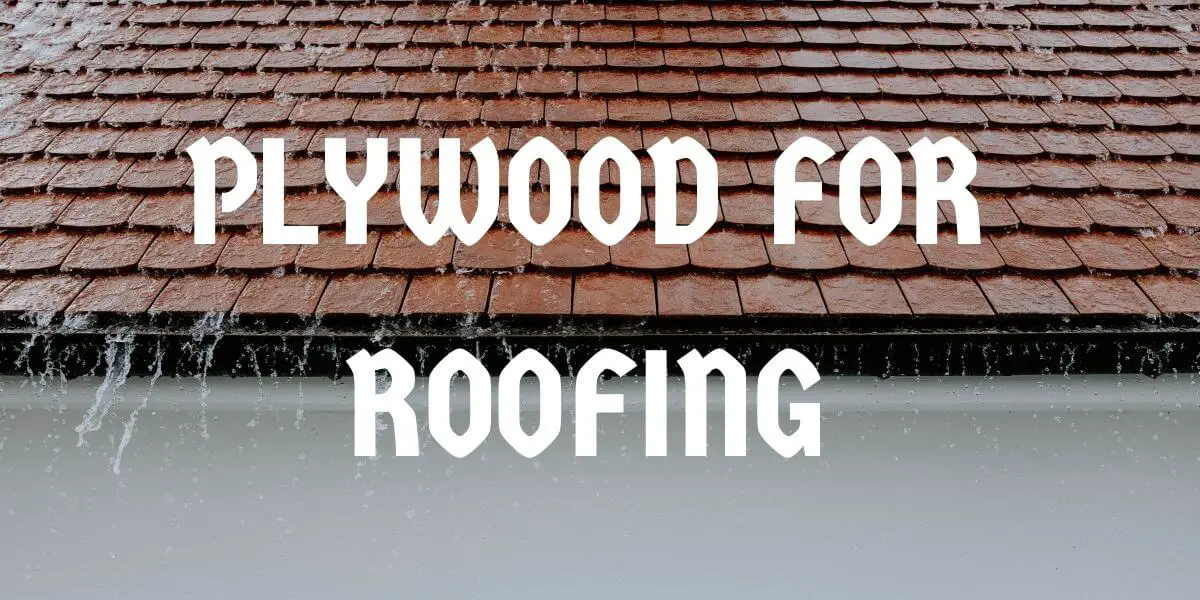Plywood is most often used for roofing. Plywood is versatile and is used in almost all exterior and interior construction applications. Builders prefer plywood because of its structural stability, water resistance, low cost, and other excellent properties.
Many types of roofing materials are available in markets, such as Metal roofing, Stone-coated steel, Rubber slate, Solar tiles, Asphalt shingles, Green roofs, and more. In this blog post I am sharing with you Best Plywood For Roofing.
Plywood for Roofing

There are multiple types of Plywood for roofing that can withstand moisture or weather conditions for a long time. This Plywood is designed for durable roofing. The price is low compared to other roofing materials, and the installations are easy.
Some types of Plywood are used for roofing, structural construction, marine Plywood, and CDX plywood.
Structural Plywood
Structural plywood has good strength, performance, and durability. It is used frequently in building applications for multi-purpose. This is a particular type of structural plywood called Marine Grade Plywood. Marine plywood can be considered as structural plywood but not all structural plywood can be considered as marine plywood.
Marine-grade plywood is used for marine applications such as boats and boat parts. Type A-Bond or B-Bond glues are used for structural plywood boards. A-Bond glue is more durable than B-Bond glue.
Structural plywood is of two types A and B-Bond. A is more durable and stronger than B-bond. But B-Bond Structural plywood is also used for the use of exterior applications.
Here are some pros and cons of using structural plywood:
Pros:
- Strength and durability: Structural plywood is made with high-quality veneers bonded with strong adhesives. Structural plywood has excellent strength and durability.
- Cost-effective: Structural plywood is often more cost-effective than other building materials, such as solid wood or concrete.
Cons:
- Weight: Structural plywood can be heavy and require additional support or reinforcement in some applications.
CDX Grade Plywood
CDX-grade plywood is a type of construction-grade plywood commonly used in building projects. It is a popular choice for roofing work. CDX-grade plywood is often used in construction projects where strength and durability are essential, but the appearance of the front and back surfaces of the plywood is not good. They need to be covered with other materials.
CDX stands for
- C – the grade of the front of the plywood sheet.
- D – the grade of the back of the plywood sheet.
- X – the type of glue used to bond the wood layer.
Here are some pros and cons of using CDX-grade plywood:
Pros:
- Affordability: CDX-grade plywood is often less expensive than other roofing materials, making it a popular choice for roofing projects.
- Strength: CDX plywood is manufactured with exterior-grade glue, making it resistant to moisture and decay.
Cons:
- Appearance: CDX-grade plywood has rough or knotty surfaces and visible knots, splits, and other imperfections.
Ordinary Plywood is Good for Roofing?
Ordinary does not have good strength performance like structural plywood. It is used for general applications. General plywood is mainly used for interior applications such as doors, windows, and tables. General or regular plywood can also be used to make roofing, but it needs regular maintenance.
Plywood Thickness for Roofing
Plywood for roofing should have a minimum thickness of 1/2 inch, but 3/8 inch is the standard size. Most roofs are sheathed with plywood at least 3/8 inch thick. Which thickness of plywood is better for you depends on many factors, such as the country, the expected load, and how the roof is designed. And weather conditions.
In bad weather, where snow is the most falling area, The plywood chosen for roofing should be thicker for such an area.
If your roof is flatter, it’s expected to have a heavier load. In such a situation, you should use more thick plywood.
What Size Plywood for Roofing
The most common rafter spacing is 24 inches. You can get plywood sheets with a length of up to 4 x 10 feet, and OSB is up to 16 feet long.
Do Most people ask how many sheets of plywood do I need for my roof?
Most people want to know how much square-fit plywood is needed for roofing. Obviously, you don’t want to buy extra plywood. Which is of no use to you and a waste of money.
Standard plywood comes in 4×8 feet size. So how many square feet are there in 4×8 feet of plywood? To calculate it, you multiply the length by the width. So 4×8 feet of plywood has 32 square feet.
Calculating how much plywood is needed for your roof is easy. Calculate the length and width of your roof and multiply the length by the width.
For example, suppose some area of your roof is 1000 square feet. So divide by 32 (the square footage of each 4×8 plywood sheet) into 1000. The number you’ll get is the number of plywood that you need. In case you need 32 plywood. Always buy one or two extra pieces of plywood for mistakes and waste.
OSB vs Plywood for Roofing

Oriented strand board (OSB) is made by gluing and compressing small pieces of wood together and compressing them. OSB panels come up to 16 feet (or sometimes more) in length. OSB is easily identifiable by its characteristic wood strands.
Plywood is made from multiple thin sheets of veneer (thin wood slices) that are cross-laminated and glued together with a hot press. The finished plywood is made from an odd number of veneer sheets, Making the balance of cross-lamination techniques.
| # | Oriented Strand Board (OSB) | Plywood |
| Price | Less expensive | More Expensive |
| Available in size | Larger panels available (Available in up to 16 feet) | Panels are not as large (limited to 8 to 10 feet) |
| Water test | OSB plywood absorbs water from contact with moisture. ( ½ inch OSB can increase up to 1/4 inch overnight.) | Good plywood remained stable. |
| Formaldehyde | Contains formaldehyde (Formaldehyde may cause occupational asthma). | Contains less formaldehyde. |
| Market share | Oriented Strand Board holds 70 to 75 % market share. | While plywood accounts for about 25%. |
| Wood contains | 95% of wood and 5% wax and resin. | 100% solid wood veneers. |
| Grades | Many grades are available such as OSB/1, OSB/2, OSB/3, and OSB/4. | There are four main grades of plywood veneer or ‘sheets’: A, B, C, and D |
| Strength | OSB has a greater shear strength than plywood panels. | Plywood has less shear strength than OSB. |
Should you hire a roofer?

If you are doing roofing installation for the first time, should you hire a roofer or do it Yourself?
To get a solution, you should pay attention to specific points. Installation of roofing sheets can be a difficult task. In some cases, turning this into your own roofing project may have more benefits than hiring a professional roofer.
The Experience
Depends on what work experience you have. If you do not have the knowledge of roofing, then you may not be able to do this work well because you don’t know about the best techniques. An experienced roofer knows all the best techniques that make the job better.
“Nothing ever becomes real till it is experienced.”
John Keats
Experience cannot be made by reading youtube videos and books. It takes months and years to experience. You will not want to do any experiments with your home. Small Mistakes can cause heavy damage.
Safety
Every day worldwide, thousands of people get injured in construction incidents, and some even die. For a non-experienced person, It is more likely to be a mistake.
Roofing is challenging work. It requires more attention. If you want to do this, work yourself, then make sure you have someone with you to help you. Before starting work, pay attention to your safety, like wearing gloves for your hands and glasses for your eyes. Keep yourself with the help of rope.
Time
If you have enough time, you can do the roofing yourself. But an experienced roofer will always take less time to do the same work.
The roofing company takes responsibility for its work. If there is a mistake, the roofing company fixes the work for the same money.
Material expenses
If you do not have sufficient roofing knowledge, you can choose the wrong or expensive material. An experienced roofer is aware of all materials. So that he never cheated while buying material..
Quality
Nobody wants to compromise on the safety of the roof. Quality definitely makes the difference between an expert and a beginner. An export always provides quality work. If you believe that you will do quality work. Then try to do it yourself.
Conclusion
The conclusion of Plywood For Roofing is “Roofing plywood is used because it has good strength and durability in plywood. It also stays moisturized. Plywood is available in many grades. Plywood grades A and B are considered the best for roofing.”
Choose suitable plywood according to your country’s weather, and if you want excellent work at the right time, always hire a professional roofer.


Comments are closed.